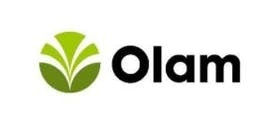By Chris Brown, Vice President and Global Head of Environment, Olam International
Food and agriculture is rooted in the world’s natural resources. These include all the plants, animals and micro-organisms that keep soils fertile, pollinate plants, purify water and air, and fight crop pests and disease, making them critical for food security. But how many of us think about the natural capital that went into producing our food?
Here are five ways we’re working to reimagine food systems to operate within nature’s boundaries…
Accounting for nature
So far I believe we’ve failed to evidence and articulate the business case for nature in a way that cuts through the short-term, globalised financial system we operate in. Instead of GDP being the main metric for success, value should be assigned to the natural assets that underpin our economic prosperity.
To really move the needle on natural capital, it can’t be confined to the remit of sustainability teams, but put into hands of decision makers – this means policy leads, financial institutions and for businesses, the finance and risk teams. At Olam we have done just that by creating a new ‘Finance for Sustainability’ team to account for natural capital and work to incorporate it into the P&L and balance sheet, through our Integrated Impact Statement (IIS). We’re working to apply planetary boundaries in multi-capital accounting, allowing us to see the natural capital value we create, or erode, based on the decisions we take and subsequent risks or opportunities.
Putting data and insights into the hands of our customers via AtSource
Through our sustainable sourcing platform AtSource, customers can track the environmental footprint – broken down into carbon, waste, water and 33 other indicators – from our farms to their doorstep; and through this insight, help us shape real change on the ground, particularly in terms of addressing the wider needs of the landscape.
AtSource Infinity represents our highest ambition for positive system transformation. It is a high bar but we want our Infinity programmes to inspire our customers and stretch both our own teams and our partners to deliver extraordinary results.
The first of Olam’s two sustainability programmes to qualify for Infinity status is a circular coffee model, involving a major coffee roaster, Solidaridad, SERFOR and a cooperative, where profits from the sale of products made from spent coffee grounds in the Netherlands will be re-invested into environmental conservation and improved farmer livelihoods in Peru.
The second Infinity project in action is in Ghana, co-created with Rainforest Alliance and in collaboration with Partnership for Forests (P4F). It is incentivising 10,000 cocoa farmers to protect and restore the Sui River Forest Reserve, by helping them increase their yields through more sustainable agricultural practices and access to new income-generating opportunities.
Restoring the balance between agriculture and ecosystems
Through our ‘net-positive’ approach within Olam’s Living Landscapes Policy, we’re building resilience into our supply chains with ecosystem conservation and regenerative farming practices, with the long-term goal of putting back more into food and farming systems than we’re taking out. This resilience is ultimately what will determine our, and indeed the planet’s, ability to continue satisfying the world’s food demands.
In California for example, where we have our almond, walnut and pistachio ranches, Olam’s farming team is working with Groundwater Sustainability Agencies (GSAs) to push water back into the sub-basins, with 316 million gallons of groundwater recharged in 2019 alone.i
Reimagining how we work to protect natural capital
In our own farms and plantations, we have direct oversight and control, but understanding deforestation close to, or linked to smallholder suppliers, is a huge task. For this reason, we have developed the Forest Loss Risk Index (FLRI) to identify deforestation ‘hotspots’, predominantly in cocoa and coffee supply chains, where we need to focus our attention.
Having applied risk assessments to over 400 country and product combinations so far, we can use the Olam Farmer Information System (OFIS) to map exactly where farmers are operating relative to the deforestation and work with them to prevent land expansion, while promoting productivity. To improve our scope for action on deforestation in Indonesia, last year we shared our OFIS technology with the Wildlife Conservation Society to reduce forest encroachment in the Bukit Barisan Selatan National Park (BBNSP) in Sumatra.ii
Driving scale through sharing best practice
As our CEO and Chair of WBCSD Sunny Verghese often says, “system transformation requires surprising alliances”, and crucially, our efforts to mitigate and create natural capital impacts have taken us beyond our own walls to drive real change at country-level, through cross-sector collaborations. The Sustainable Rice Landscapes Initiative (SRLI) – led by a broad coalition including the FAO, UN Environment, SRP, and WBCSD – is training farmers on four straightforward solutions that can cut methane emissions from rice production by up to 70%.
Meanwhile in Mexico, Olam is part of the Alliance for Sustainable Landscapes and Markets project in partnership with USAID and Rainforest Alliance, which is reforesting 4,000 hectares in the protected biological corridor in Chiapas, contributing to Mexico’s goal of zero deforestation by 2030.
And in what is shaping up to be a year when nature will take centre stage – albeit virtually - at the Convention on Biological Diversity, I’m pleased that influential organisations and forward-thinking businesses have come together in one global collaboration, Business for Nature, to demonstrate business action and call on governments to reverse nature loss by adopting five policy recommendations.
Because, and to quote Sunny again, this is not just the right thing to do for our planet; our profits benefit too from the significant cost savings we accrue from improved resource-use efficiency through collaboration.
————
i Discover more on our groundwater recharge efforts here
ii Read the press release
Publish your content with EB Publishing
It's about who you reach. Get your news, events, jobs and thought leadership seen by those who matter to you.











